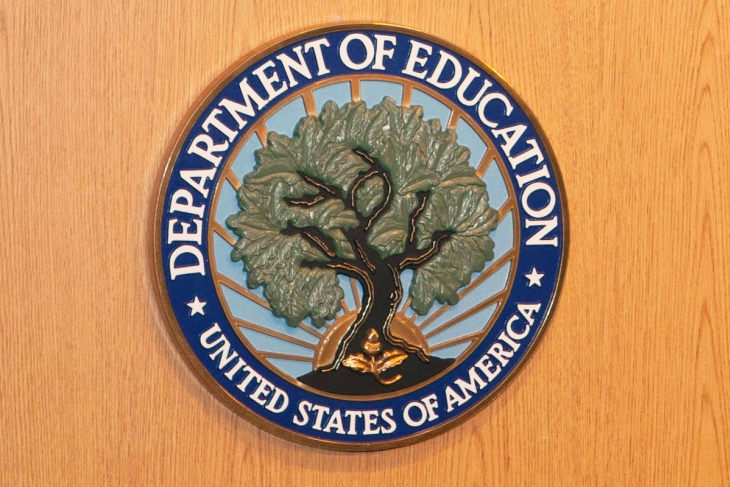This essay is part of the The Moonshot for Kids project, a joint initiative of the Fordham Institute and the Center for American Progress. It will run in three parts, with the second and third appearing in future issues of the Education Gadfly Weekly.
With four billion dollars of funding over twenty-five years, the federal Charter Schools Program (CSP) has turned out to be one of the larger and (in my view) more successful examples of government-supported R & D in the K–12 realm, with heavy emphasis on the “D,” but in ways that have also fostered considerable innovation. It has, in the words of veteran education analyst Christy Wolfe (now at the National Alliance for Public Charter Schools), “played a critical role in increasing the number of charter schools across the country.” It has assisted schools to come into being that otherwise could not afford to launch. It has facilitated the growth of successful charter networks. And because there are more than 7000 such schools operating today, attended by some 3.2 million youngsters, mostly poor and minority, and staffed by 219,000 teachers, it’s fair to say that this major alteration within American public education isn’t going away, no matter how much the traditional school establishment and a cadre of aspiring politicos would like it to.
In the paragraphs that follow, we see where CSP came from and what it does—and get a peek at why establishmentarians and curmudgeons are now pushing their political pals to curb it. We also see why it can fairly be seen as a model for federal R & D efforts in education—and how it differs from the other big “D” initiative that Washington launched in the early 90s, the New American Schools Development Corporation.
—
Though the concept can be traced back years earlier, 1991 marked America’s first-ever charter law (Minnesota) and 1992 brought the second (California.) Only one of these independently operated public schools of choice had actually opened its doors when Bill Clinton was elected president, but he favored (public) school choice, was a keen supporter of the charter idea, had (as Arkansas governor) chaired the Democratic Leadership Council and its Progressive Policy Institute, which served as key boosters for the charter idea, and in time would declare that he wanted to see 3,000 such schools in the U.S. by the year 2000. (That target was hit a couple of years later.)
Clinton wasn’t alone. Teachers union head Albert Shanker had helped awaken America to the charter concept. Democratic legislators like Ember Reichgott (later Ember R. Junge) in Minnesota and Gary Hart in California, as well as Democratic governors such as Colorado’s Roy Romer were pivotal figures in enacting state laws that allowed charters to come into existence. So, unsurprisingly, were innumerable Republicans, importantly including—as events unfolded—Minnesota Senator Dave Durenberger.
Charter schools, in retrospect, were a bit of a blind man’s elephant, which is to say one could easily associate them with a number of different goals, missions and reform preferences, according to one’s perspective. They were indisputably schools of choice, yet they were public schools—free, open to all, secular, and ultimately accountable to elected officials. They were—and are—a robust form of school choice without vouchers, but they’re also elements of a vibrant education marketplace in which parents, neighborhoods, groups, and communities can launch schools that are largely freed from the bureaucracy and can thus align their operations with their own needs and priorities, making them a sort of half-way house between voucher partisans and district school monopolists. They invite entrepreneurialism, but that includes teachers who want to design and direct their own schools (which explains Shanker’s support). They empower principals. They give exit visas to poor kids trapped in dire inner-city schools. Because they mostly start from scratch, they sidestep the misery of trying to “turn around” a failing school. They can function as laboratories of educational innovation in their own right. And much more.
It’s not surprising that “New Democrat” Clinton wanted to see lots of them—and was game to pursue that goal despite opposition from teacher unions and the rest of the public-school establishment. (Shanker was an education visionary and statesman in this realm, as in many, but here, as in many worthy reforms that he championed, he could not deliver the support of his own AFT.) Unlike many Republicans, who tended to view charters as something that states were doing—and doing in very different ways and at different speeds—Clinton was also game to enlist Uncle Sam to help make more charters happen faster in more places.
He arrived in a Washington that was already abuzz over education reform in the wake of the 1989 Charlottesville “summit” to which President Bush (41) had summoned all the governors, Clinton included, and which gave rise to an exceptionally optimistic and challenging set of “national education goals” for the year 2000. Bush and his education secretary, Lamar Alexander (former Tennessee governor, now senior senator from Tennessee and chair of the education committee), followed up the goal-setting with an ambitious reform strategy dubbed “America 2000.” The parts that required legislation didn’t get very far in a Democratic-majority Congress that was eyeing the 1992 election, but it triggered much discussion of whether and how the federal role might be strengthened so as to push U.S. schools toward stronger achievement—and also brought much discussion of school choice. Indeed, it gave Senators Durenberger and Connecticut Democrat Joe Lieberman an opportunity to moot a federal charter-school assistance program as part of such a strategy—and to get committee chair Ted Kennedy on board with the idea.
Stay tuned for parts II and III.

